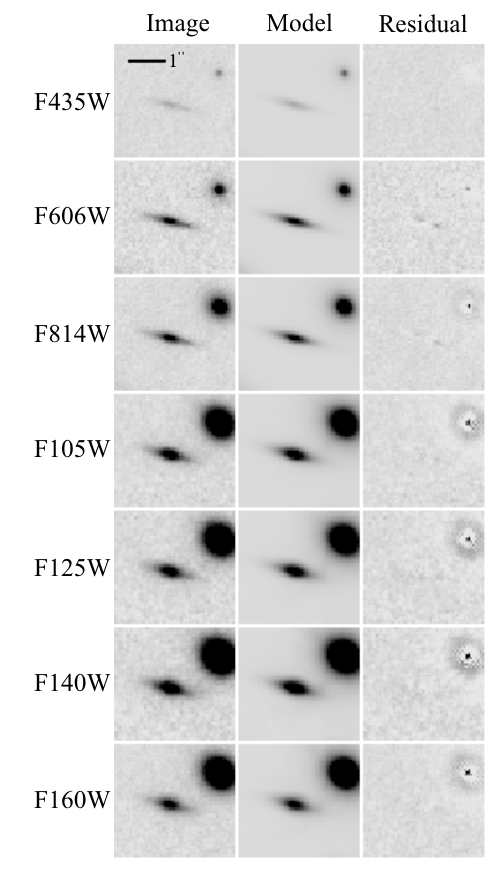Research (under construction)
Since the early Universe, galaxies have undergone significant changes, from becoming redder in color and larger in size, to experiencing fundamental changes in their structure, star-formation rates, and more! These changes hold clues about the evolutionary pathways through which galaxies have evolved.
Modelling Galaxy Light Profiles
Modern large optical and near-infrared imaging surveys allow us to study galaxies at different wavelengths. To make optimal use of the available multi-wavelength data, we model galaxies in all bands using the tools developed as part of the MegaMorph project (GalfitM and Galapagos-2). By effectively increasing the S/N of the data, this state-of-the-art fitting approach has made it possible to measure the structural properties of objects 2-3 magnitudes fainter than previously studied.
The images, models, and residuals are shown to the left for an example galaxy from the Hubble Frontier Fields (HFF) in the seven bands that are consistently available for all cluster and field pointings. One of the challenges with multi-wavelength fitting is that, as can be seen from the figure, galaxy size is wavelength dependant. In our modelling, we have allowed
